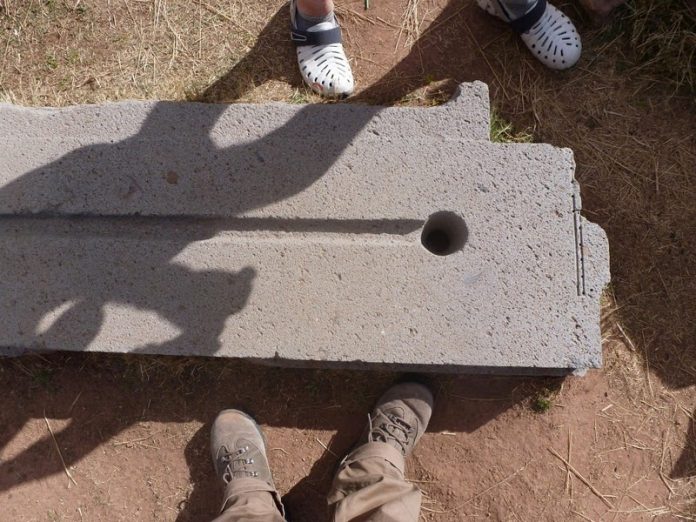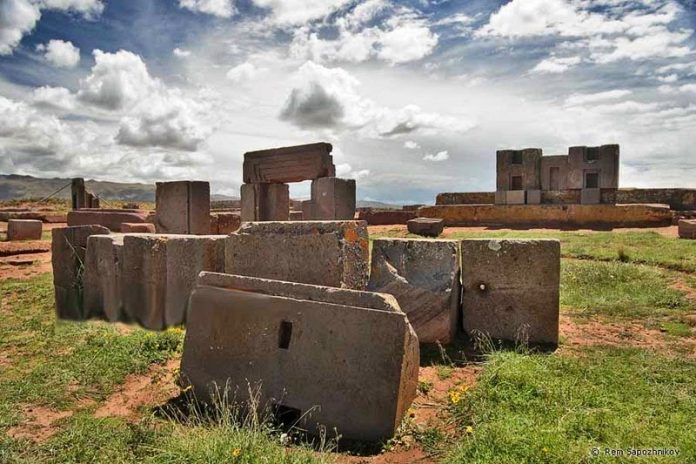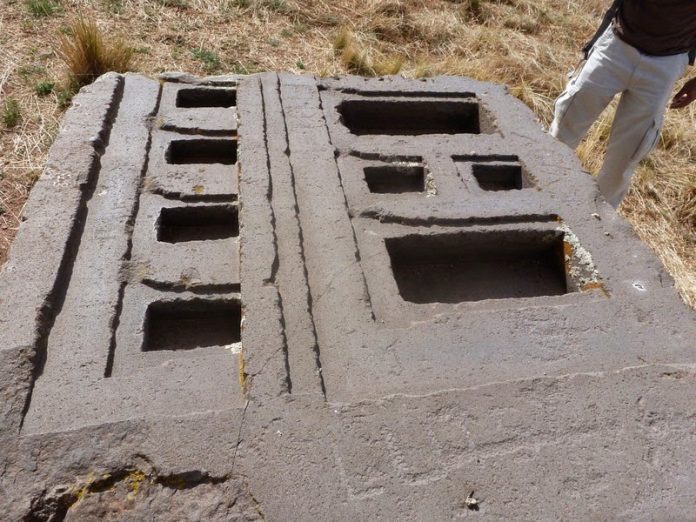Puma Punku refers to the title given to the temple complex that is located close to Tiwanaku in Bolivia. It is part of an archeological site known as “Tiahuanacu.”. The Puma Punku Complex is an array of ramps and plazas, all of which are situated around the Pumapunku platform mound. Today, the massive structure that was built on top of the mound is in ruin.
The origins of the temple are unknown; however, based on the dates of carbon dating on organic matter discovered at the archaeological sites, experts believe that this site was constructed in the Tiwanaku Empire, which was the largest civilization before the Inca Empire, and flourished somewhere between 300 and 1000 AD.
The most fascinating aspect of Puma punku is the work of stone. Puma punku was a mound of earth that was terraced and initially covered with megalithic blocks, each of which weighed many tens of tons. The red sandstone and andesite stone were cut in such a way that they fit in and were secure with one another without mortar. The technical sophistication and precision demonstrated in these blocks are awe-inspiring.
Even a razor blade could slip between the stones. The blocks are finished to machine quality’ and have holes precisely drilled. It is believed that this has been the result of a culture that had no written system and was not aware of the invention of wheels. There is something that doesn’t make sense.
When constructing the Puma Punku walls, the stones were carefully cut to be interlocked with the other stones. The blocks were arranged as puzzle pieces, creating joints that are load-bearing without the use of mortar. The most common method of engineering is cutting off the upper stone’s top at a specific angle and then placing the top stone that is cut in the exact same way.
The preciseness of these angles that were used to construct flush joints is a sign of a sophisticated understanding of stone-cutting techniques and an extensive knowledge of the concept of descriptive geometrical concepts.
The joints have been designed so precisely that even a sharp blade can pass through the stones. A large portion of the masonry is made up of precisely cut rectilinear blocks of the same size and shape that can be swapped for each other and still have an even surface and even joints. The blocks were cut so precisely that they suggested that they could be used for prefabrication as well as mass production, which are far ahead of Tiwanaku’s Inca successors, hundreds of years further.
A few stones are still in an unfinished state, which shows certain techniques employed to form the stones. They were first pounded with stone hammers, which can be located in abundance in local andesite quarries. Sand created depressions, which were then gradually ground and polished using flat stones and sand. It is believed that the Tiwanaku civilization and usage of enclosures and platform mounds seem to have reached their peak around AD 700–1000 AD, after which the city’s core and its surrounding areas could accommodate more than 400,000 inhabitants.
A vast system of infrastructure was constructed, which included an extensive irrigation network that covered more than 30 square miles and supported cultivating potatoes, quinoa, corn, and other varieties of crops. At the height of their popularity in the late 1800s, the Tiwanaku culture ruled over the Lake Titicaca basin as well as parts of Bolivia and Chile.
The stones are massive in dimension. The largest block can be 25.6 feet long, 17 feet wide, and 3.5 feet thick. It is believed to weigh 131 metric tons. Because of their size, the process by which they were moved to Pumapunku has become an additional topic of discussion ever since it was discovered.
The chemical analysis has revealed that the red sandstone blocks were brought on a steep slope from a quarry located near Lake Titicaca, roughly 10 km away. Andesite smaller blocks, which were used to make stone faces and carvings, were quarried in the Copacabana Peninsula about 90 kilometers over Lake Titicaca.
Furthermore, it can be argued from the circumstantial evidence that Puma Punku was built by a more technologically evolved culture than the Tiwanaku. The carbon dating results were not accurate because of contamination of the samples, or Puma Punku was constructed by another civilization that was able to cross the ocean, construct the complex, and then leave. Many believe that Puma Punku was not built without the help of aliens.
The site is completely destroyed today, with massive chunks of granite stacked over each other. It appears that an earthquake, presumably brought on by a tidal surge from Lake Titicaca, destroyed the site.
Related Reading: The Gate of Sun Bolivia








